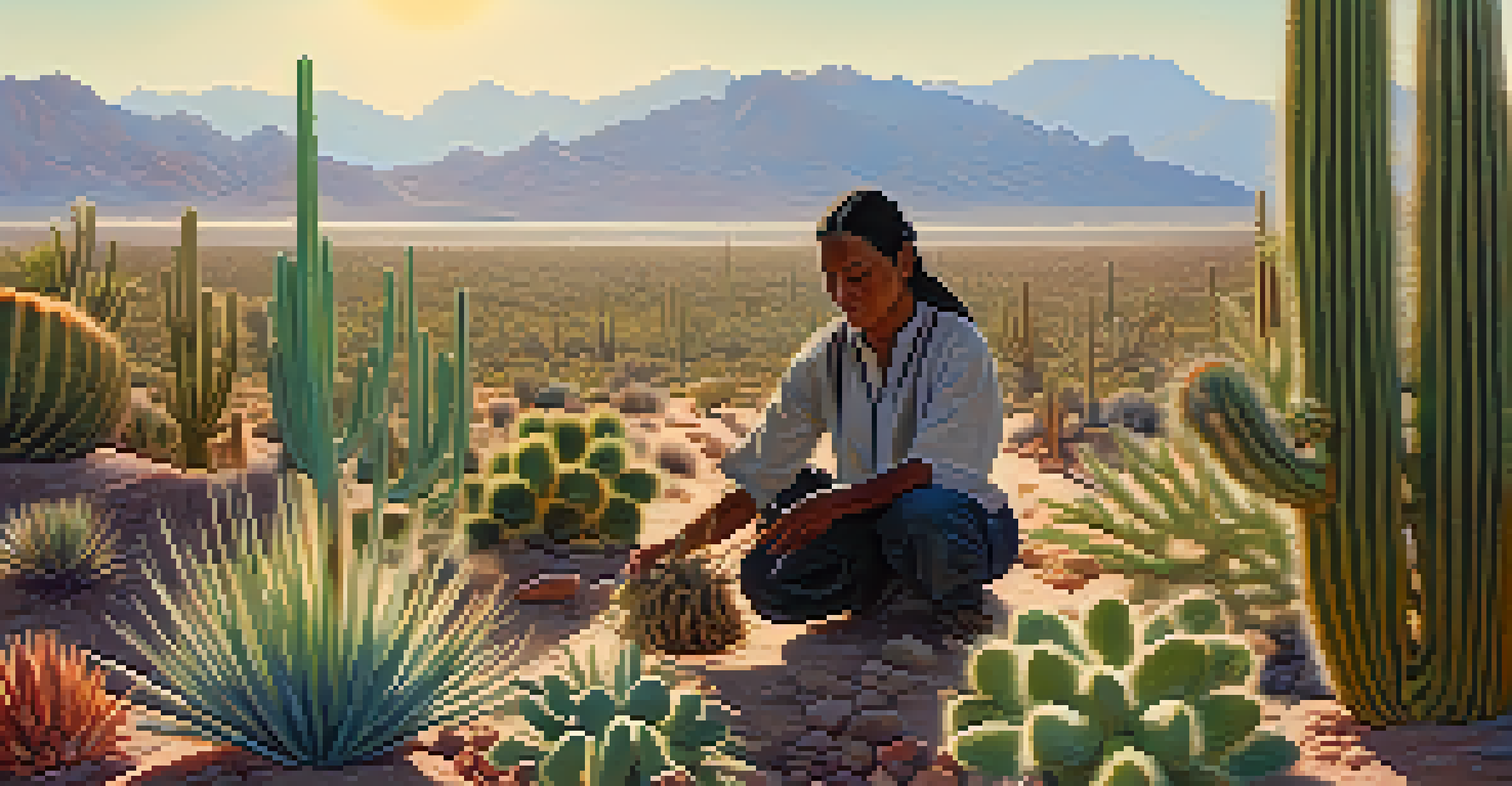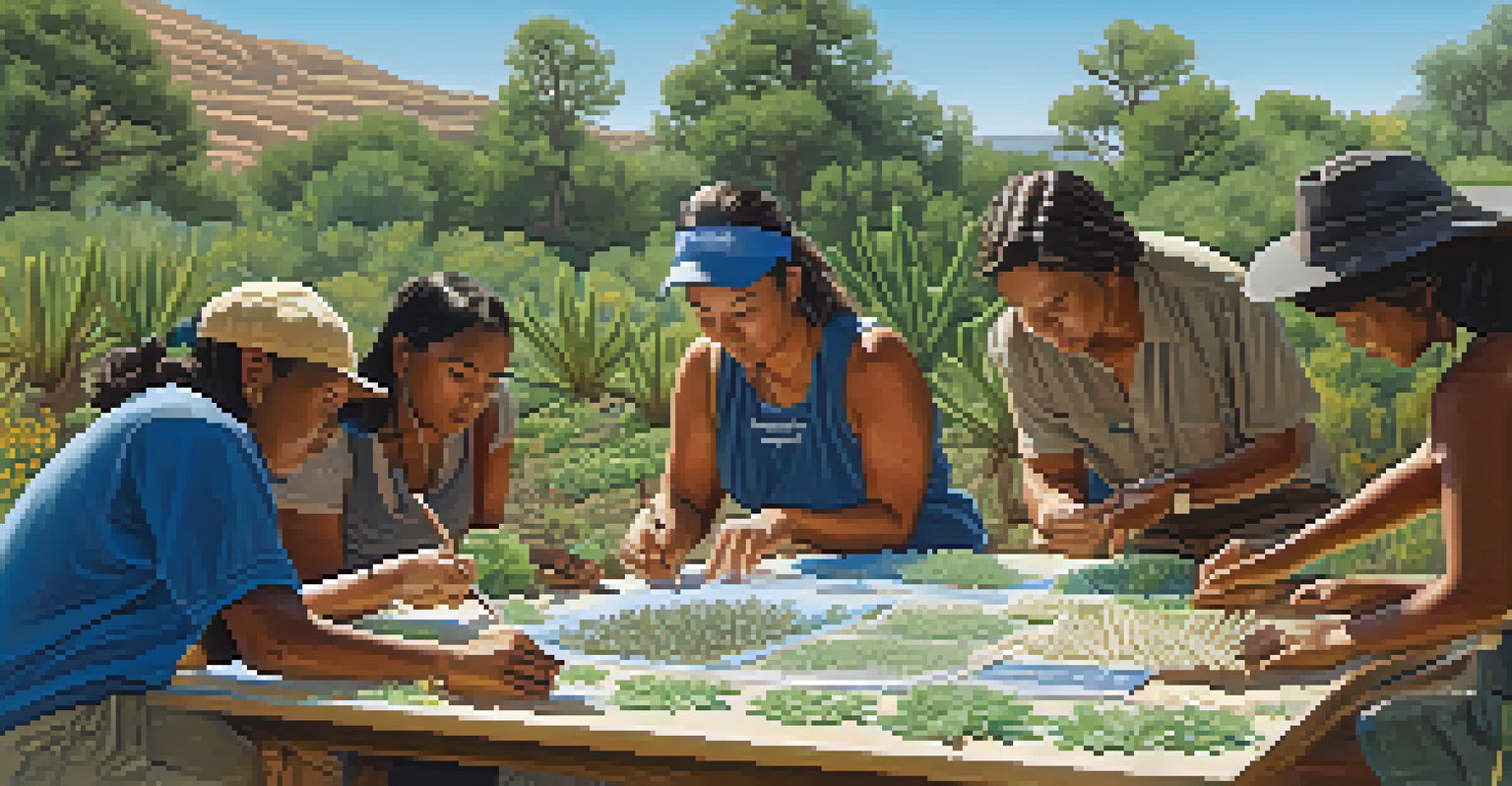Balancing Peyote Harvesting with Environmental Conservation

Understanding Peyote: A Cultural and Ecological Perspective
Peyote, a small cactus native to Mexico and the southwestern U.S., holds significant cultural importance in various Indigenous traditions. It is revered for its psychoactive properties and is often used in spiritual ceremonies. However, this cultural significance also brings challenges related to its environmental sustainability.
The preservation of our natural resources is not a responsibility of the government alone; it is the responsibility of every American.
The harvesting of peyote affects its natural populations, which are already threatened by habitat loss and overharvesting. As demand grows, the need to balance traditional practices with environmental conservation becomes increasingly critical. Understanding this balance requires a close examination of both cultural reverence and ecological responsibility.
In essence, respecting the cultural heritage of peyote harvesting while recognizing the ecological implications is essential. This dual perspective sets the stage for finding sustainable solutions that honor both traditions and the environment.
The Threats to Peyote Populations and Their Habitat
Peyote plants are often found in arid regions, making them particularly vulnerable to environmental changes. Factors such as climate change, urban development, and agricultural expansion threaten their natural habitats. As these pressures intensify, the risk of peyote extinction looms larger, prompting urgent action.

Additionally, overharvesting poses a direct threat to peyote populations. When too many plants are harvested for commercial use or recreational purposes, it disrupts the delicate balance of local ecosystems. This not only threatens the cactus but also impacts the broader biodiversity of the area.
Cultural and Ecological Balance Needed
Respecting Indigenous traditions while ensuring ecological sustainability is crucial for the future of peyote.
Recognizing these threats is the first step toward developing effective conservation strategies. By understanding how these factors interplay, we can work towards solutions that protect peyote and its environment.
Cultural Significance of Peyote in Indigenous Practices
For many Indigenous communities, peyote is more than just a plant; it is a sacred medicine integral to spiritual practices. These traditions emphasize the importance of respectful harvesting and sustainable use, highlighting the need for balance between cultural practices and ecological health. The teachings passed down through generations often include guidelines for responsible harvesting.
We do not inherit the earth from our ancestors, we borrow it from our children.
However, as the popularity of peyote has surged, some traditional practices may be overshadowed by commercial interests. This shift raises concerns about the integrity of Indigenous spiritual practices and the potential for exploitation. It underscores the necessity of integrating cultural preservation with conservation efforts.
Thus, fostering respect for Indigenous knowledge and practices can lead to more sustainable harvesting methods. This collaboration is essential for protecting both the cultural heritage and the ecological integrity of peyote.
Sustainable Harvesting Practices for Peyote
To ensure the long-term viability of peyote populations, sustainable harvesting practices must be adopted. These practices can include selective harvesting methods, which allow plants to regenerate naturally. By taking only what is necessary, harvesters can minimize the impact on the ecosystem.
Additionally, education plays a crucial role in promoting sustainable practices. By raising awareness about the importance of responsible harvesting, we can empower both Indigenous harvesters and commercial vendors to make choices that benefit the environment. This education can also extend to consumers, encouraging them to support ethical sourcing.
Threats to Peyote Populations Increasing
Climate change, habitat loss, and overharvesting pose significant threats to peyote's survival and ecosystem.
Ultimately, sustainable harvesting practices will require collaboration among various stakeholders, including Indigenous communities, conservationists, and policymakers. Together, these groups can develop guidelines that protect both the cactus and the cultural practices surrounding its use.
The Role of Legislation in Peyote Conservation
Legislation plays a vital role in regulating peyote harvesting and protecting its natural habitats. Laws can establish guidelines for sustainable practices and set limits on harvesting quantities, ensuring that peyote populations can thrive. This legal framework can help prevent overharvesting and promote responsible stewardship of the land.
However, the effectiveness of legislation depends on the involvement of local communities. Engaging Indigenous groups in the decision-making process is crucial for creating laws that respect cultural practices while promoting conservation. This collaboration can lead to more effective and culturally sensitive policies.
In summary, strong legislation combined with community involvement can create a protective framework for peyote. This approach not only safeguards the cactus but also honors the traditions of those who have long revered it.
Community Initiatives for Peyote Conservation
Local communities play a pivotal role in the conservation of peyote. Initiatives aimed at educating community members about sustainable harvesting and the ecological significance of peyote can foster a sense of responsibility. By involving community members, conservation efforts can be more effective and culturally relevant.
One example of such an initiative is community-led workshops that teach sustainable practices and the importance of preserving peyote habitats. These workshops can provide practical training in responsible harvesting methods, empowering individuals to take action in their own communities. Such initiatives often lead to a stronger connection between people and the land.
Community Engagement Drives Conservation
Local initiatives that educate and involve communities are essential in fostering responsible harvesting and protecting peyote.
Ultimately, community engagement is essential for successful conservation efforts. By harnessing local knowledge and fostering a sense of shared responsibility, communities can effectively protect peyote for future generations.
The Future of Peyote: Balancing Harvesting and Conservation
Looking ahead, the future of peyote depends on our ability to strike a balance between harvesting and conservation efforts. As demand continues to grow, proactive measures must be taken to ensure that this sacred plant can thrive alongside its cultural significance. This balance will require innovative approaches and collaboration across various sectors.
One potential solution is the development of cultivation practices that allow for the sustainable production of peyote. By growing peyote in controlled environments, we can reduce pressure on wild populations while meeting demand. This strategy could help preserve natural habitats while providing a steady supply of the plant for cultural and medicinal use.

In conclusion, balancing peyote harvesting with environmental conservation is not just an environmental issue; it is a cultural imperative. By working together, we can ensure that future generations can continue to honor both the cactus and its rich heritage.